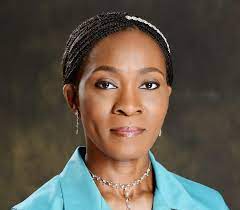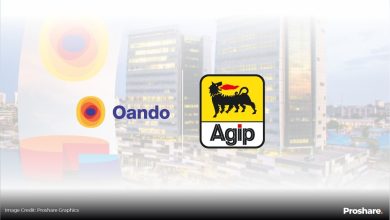CADBURY Plc IN THE THROES OF BITING COSTS

When the pace of genetic evolution falls behind the pace of environmental change, species like the dinosaurs can get wiped out. But not only dinosaurs can get wiped out in this circumstance; in the corporate world ,when an industrial terrain changed shape faster than the top management could refashion its basic beliefs and assumptions, a corporate organization can suffer a similar fate ; when faced with the tides of technological, demographic, and regulatory change success is usually eroded or destroyed when a leader in charge is without foresight .
The above fate of a dinosaur clearly alluded to the current conundrum confronting Cadbury Plc , one of the oldest listed companies on the Nigerian stock exchange , a brand easily recognizable by nearly every Nigerian as its success profile continues to nosedive .
This fact is not limited to Cadbury ,it could happen to any other brands . Over time, in corporate organizations ,new and more efficient profit engines make older one obsolete, and when a new engine is not re conceived ,any corporate organization could be a victim.
The parlous state of Cadbury has continued to raise questions : Is anything wrong with its products or its management ? This is just one of those questions. Sometimes, some observers of this company’s tales of woes link the ugly scenario to the products. To such people, they claimed, most of its brands are not very competitive any longer making them to loose their market shares to its key competitors. But facts and figures from its financial books rather link its challenge to its less creative and imaginative management; An analyst noted , “it can be quickly situated on leadership”.
To blame the lame duck performance of Cadbury in the recent years on the laxity of its management may not be farfetched . A good leader with foresight must constantly inquire whether his or her company’s definition of its served market is too narrow, whether its margin structure can be sustained, and whether there might be another ,much more efficient way to deliver a particular product or service
But when there is no such a person of foresight and no change in the efficiency of the economic engine for years due to lack of sensitivity to the industry trends or propensity to deny the uncomfortable truths remains , such a firm, some analysts noted , may end up paying heavily for such a negligence . This is the situation where Cadbury Plc has found itself which is turning it a corporate dinosaur of sort. Its base business has been imperiled by high cost of production and sales that continue to hit hard on its bottom line ;currently its Earnings per share (EPS) remain miserable at 44k as its Gross Margin at 15.36% and Net Profit Margin 1.96% continue to send out poor signals of its financial position .
In a nutshell, the problem of Cadbury is not with its products but its management .With its shrinking profit margins, the only way out is to ensure productivity improvements that reduce costs of sales ,a major differentiator in this industry . This problem has proved to be a hard nut or seemingly insurmountable and the only way out is to develop an iron teeth or find someone with the power of thinking outside the box .However, from all indications ,there is no one with such ingenuity to tame the problem and it continues to wreck its havoc with reckless abandon. Unfortunately , its minority investors are victim in this circumstance . For this , some analyst , have called for the company to be delisted on the Exchange .According to them, it serves no purpose in being listed when it has consistently failed to create value for its minority shareholders for years. If there is anyone benefiting from its current performance ,they claimed , it is Mondelez, the local management of the company, and the Nigerians sitting on its board. Can Cadbury be bailed out and how soon? This is the question whose answer is still hanging in the balance
.2021 Full Year Results : Facts ,Figures on Cadbury’s financial Health
.Indeed , its performances in the last few years are its ugly reference points. A detailed look into its books explains this poor health better . Cadbury Plc , the once corporate giant , no doubt , is in dire straits. Barely out of the 2016 scandal that shook it to its foundation, it is now currently in fighting a cost debacle .
While some companies are finding it difficult to push their products in the market , the core challenge confronting Cadbury is not generating adequate revenue but converting its revenues to profit efficiently; this is illustrated by the gap between its 2021 revenue and its net profit as the company is making money but the management has not proved it could convert its revenue to profit efficiently to generate better returns ,making its investors to get disillusioned year on year
In 2021 financial year , a trifling view of the company’s book shows it generated a total sum of N42.4b revenue, however , it failed to make N1b from that huge revenue ;this confirms to its highly disillusioned observers and analysts how deep-seated its profit engine has decayed . .
This says more about the quality of the company’s leadership .This may not be farfetched . Since the company could grow its revenue in the financial year 2021 by 20% to N42.37b against N35.41b in 2020.,some analysts believed this is a strong proof that its various brands are highly competitive ; more so some of its products are already household name ,particularly Bournvita , the company’s flagship product ,that ranks competitively with Milo ,its closest rival .
. Its inability to control its cost of sales that turned its leviathan revenue to a Lilliputian gross profit and net profit is a clear proof of this view ; its gross profit margin confirmed this as much. In the financial year 2021, while its gross profit inched up b 10.3% , its gross profit margins backtracked from 16.7% to 15.4% with its cost of sales at 21% between 2020 and 2021 .
But the yearly trends of the cost of sales illustrated above is nothing but deceptive; it failed to expose the damage done by the management to the fortune of the company over years. The nasty issue, however, is better acknowledged when the cost of sales is compared to the total revenue. This is where real picture of the damage done to Cadbury is perceived as its cost of sales relative to the revenue hit a roof top at 85.6 % in 2021 compared to 83% in 2020 .The higher the cost of sales the lower the gross profit margin ;a metrics that indicates if a company’s sales are enough to cover its costs. ;a positive gross profit margin is the first step toward net profit, and the higher a gross profit margin, the closer a company is to a high operating profit margin and high net income.
From the above analysis, Cadbury made only N15 from every N100 revenue registered at the end of the year 2021. Also, its operating margin showed a similar with15.4% . This fell to 2% at its net profit margin, indicating making N2 from every N100 made at the top line as revenue; its earnings per share fell to 44k compared to 50k in 2020.This is nothing but miserable
By not keeping a significant portion of its revenues as profits, the company stands no chance of paying significant dividends. This ugly scenario is not confined to 2021 alone ,its performance in the last few years has followed this trend .Although the company reported a profit after tax of N1 billion in 2019 , the highest since 2015 when it reported profits of N1.15 billion and its revenue grew steadily throughout the years, going from N27.8 billion in 2015 to N39.3 billion in 2019 before falling to N35.4b in 2020 and ultimately N42b in 2021, unfortunately, it appears that for every year its revenues grow, its costs rise in tandem.
In fact, the cost of sale makes up a huge chunk of the total expenses. For every 100 in sales in 2019 , it spends about N80 producing a significant rise from N67.6 for a N100 sale in 2015. To put this into perspective, Nestle, spent N55 for every N100 of goods sold.
Between 2015 and 2019 ,its gross profit margin has continued to drop ; it ranged between 32.09%,22.88% , 22.48% , 22.12% and 21.17% ; during that period its three and five years averages were 21.92% and 24.15% respectively .
Its Net profit margin which illustrates how much of each naira in revenue collected by a company translates into profit followed the same trend . Between 2015 and 2019 ,its net profit margin ranged between 4.14%,-0.99% 0.91%2.29% and 2.72%; during that period its three and five years averages were 1.97% and 1.81% respectively .
Earnings per share, the number that serves as an indicator of a company’s profitability has been a bad testimonial of Cadbury too. Between 2015 and 2019 ,its Earnings per share ranged between 0.61,-0.16 ,0.16,0.44 and 0.57 ; during that period its three and five years averages were 0.39 and 0.3 respectively
However , it Return on average assets (ROAA), an indicator used to assess the profitability of a firm’s assets that is often used as a means to gauge financial performance ,unexpectedly has not been bad since growing revenues is not the issue but converting them efficiently to profit . From 2015 to 2019 ,its Return on average assets ratios ranged between 4.03% ,-1.04% ,1.06% ,2.94% and 3.72%; during that period its three and five years averages were 2.5% and 2.14% respectively
Its Return on average equity (ROAE) , a financial ratio that measures the performance of a company based on its average shareholders’ equity outstanding has ,however , been following the trend of its profitability . It hit 9.21% in 2015 and ranged down to ,-2.54% ,2.63% , 6.74and to 7.89% between 2016 and 2019 ; during that period its three and five years averages were 5.76% and4.79% respectively
Another tragic picture of Cadbury financial health is displayed by its cost to income ratio , a the measure of the costs of running a company in relation to its operating income. The higher the ratio, the greater the risk of zero profitability. It was 91% in 2021, indicating using N91 to make N100 revenue at operating level while its used N95 to achieve N100 in 2020 leaving N5 at operational level as its operational profit . It ranged between 84 % ,111 % ,91 % ,.79 % and 84 % ;from 2015 to 2019 ; during that period its three and five years averages were 84% and 89 % respectively
In the year under review , other income sources became an unusual spoiler as it was down by 77% .These are incomes from sale of by-products, insurance claims received and gain on disposal of PPE totaled N24.08b as against N108.04b in the previous year .
However ,what would have been a saving grace of the bottom line from its negative outlook was its high volume of Interest income on bank deposits that skyrocketed 578% to N856.03b from N126.24b in 2020 which after interest expenses were deducted led to net finance income that skyrocketed by381% to N607.50b from N12624b . This was as a result of its Net increase in cash and cash equivalents stood at N17.8b in2021 compared N11.1b in 2021
But this could not be .While it gave its profit before tax a positive outlook ,it could not do the same to the net income as tax credit received in the year 2020 dwarfed its profit after tax .Its profit before tax rose by 191% to N1.186b from N408.07m. However, its net profit fell by 10.9% to N830.48b from N931.83b when the tax man collected N292.16b against a tax credit of N523.76b received in 2020 .
INVESTORS AS VICTIMS OF LAME DUCK PERFORMANCE
Its investors are ,no doubt ,at the receiving end of the above revenue mismanagement . Though over the last 5 years, the company has embarked on a turnaround mission, trying to reclaim grounds it lost to the competitors likes of Nestle, the consumer goods giant, its investors are yet to feel the positive impacts. Looking at Cadbury from the point of view of capital gain and dividend, this company is nothing but a value destroyer in a literal term . 10 years ago Cadbury share price was trading at N11 and 5 years ago just over N8. The stock appears to be a value destroyer .
In terms of dividends, Cadbury is also underwhelming. Cadbury’s stock is not a dividend stock that can replace the yield that could be gotten from investing in treasury bills or bonds. In the financial year 2019 , it declared dividend per share of 49 kobo, almost double the 25 kobo it paid in 2018 . That was the first time the company is paying back to back dividends after a 3-year hiatus. Despite this significant achievement, the dividend recommended is somewhat underwhelming ;
In terms of dividend yields, it is disappointing. Holders of the stock receive single-digit dividend yield every year they get dividends from the company. Its current dividend yield is about 2% and if it decides to achieve a 100% (dividend of N800 million) dividend payout ratio this year, dividend yield will be 5%.
CADBURY has become profitable over the past 5 years, growing earnings by 33.1% per year. However ,its Return on Equity currently at 5.9% is considered low. Its share has appreciated only by 0.57% in the last one month but down by 5.35% in the last 3 months. Its share price matched the NG Food industry which returned 4.4% over the past year but underperformed the NG Market which returned 10.5% over the past year ; by the estimate of some analysts, CADBURY at NGN8.95 is adjudged be trading above its fair value of NGN1.18 and a poor value based on its PE Ratio (20.2x) compared to the NG Food industry average (11.7x) as well as based on its PE Ratio at 20.2x compared to the NG market (8.7x) .However, its PB Ratio at 1.2x is in line with the NG Food industry average. On Thursday, Cadbury Nigeria PLC closed at 8.95, -5.79% below its 52-week high of 9.50, set on Jan 25, 2022
The major reason for this is their weak profitability growth. Despite tripling profits between 2017 and 2019 growth is far from its potential as a business. This year, it reported N830 million in profits compared to N931 the year before. Perhaps a better way to view its performance is to look at its return on average equity. It has averaged 3% in returns on average equity in the last 5 years and also grew revenue at a compounded annual growth rate of 3%.
:THE ONLY WAY OUT
In the recent past several efforts at rebranding have been made to reposition some of its products. The company has kept changing its CEO to get it a better leadership .Muhammad Amir Shamsi , was imported from Pakistan in20117 after the 2017 scandal ; in April 2019, Oyeyimika Adeboye a woman of many parts was announced as the successor to Amir Shamsi, the erstwhile Managing Director of Cadbury Nigeria Plc. ,yet Cadbury ’s performance remains absolutely uninspiring with lethargic net profit relative to its revenues ; though it has returned to profitability after the 2016 scandal, it remains a value destroyer than value creator . For such a well-known brand selling popular products like Bournvita, Buttermint, Tom Tom, one would expect its shareholders have been rewarded immensely from holding on to its shares.
The best option before its management is to ensure a cost leadership . If the business units or market segments of Cadbury’ range of chocolate malt drink mixes, sweets, powder beverages and chewing gums in Nigeria .is critically examined it is easy to conclude that they are in state of maturity and stability , with customers’ loyalty fairly fixed .Under the situation, no doubt , it is difficult to gain better market share without distinctive competitive strategies like product or price differentiation . But only very innovative leaders could do this with the aim of becoming the lowest cost producer in the industry .In such a case, to grow or increase its gross profit margin any company in this state needs to lower the cost of goods which could be secured by achieving a discount when purchasing in bulk or buying products at a seasonal discount and store them until it needs them.. Furthermore, heavy investment in technology that allows automation of a company’s systems could deliver this feat as some of its processes can help lower labor costs, increase efficiency and improve accuracy . .These are some of the critical success factors that can deliver lower cost of sales for Cadbury Plc and better returns as well to its investors
Another route to achieve better profit margins by a company like Cadbury under this circumstance is by differentiation leadership . In such a situation Cadbury’s management needs to maintain unique features of its products in the market by creating a differentiating factor. With this differentiation leadership, it could target market leadership to charge a premium price for the products This could be achieved through certain product attributes like superior brand and quality, major distribution channels, consistent promotional support ,among others
Finally , using different pricing strategies is another route to cage its current skyrocketing cost of goods as experts believe pricing strategies often determine gross margins, and companies usually price their products based on the competition’s pricing. Some companies often try a margin-based pricing strategy by pricing higher than the market to maximize their gross margin, however ,this usually needs a significant marketing campaign to drive sales.
The above areas are suspected to be the managerial lacuna in Cadbury Plc that render its less competitive relative to its key competitors .But the hope is not lost yet ,analyst believed the time to rewrite the rule of game ,regenerate its core strategies and reengineer its core processes . This is necessary before the cash, people and intellectual energy needed to regenerate the core strategies are dissipated and the company enters the slippery path to oblivion






